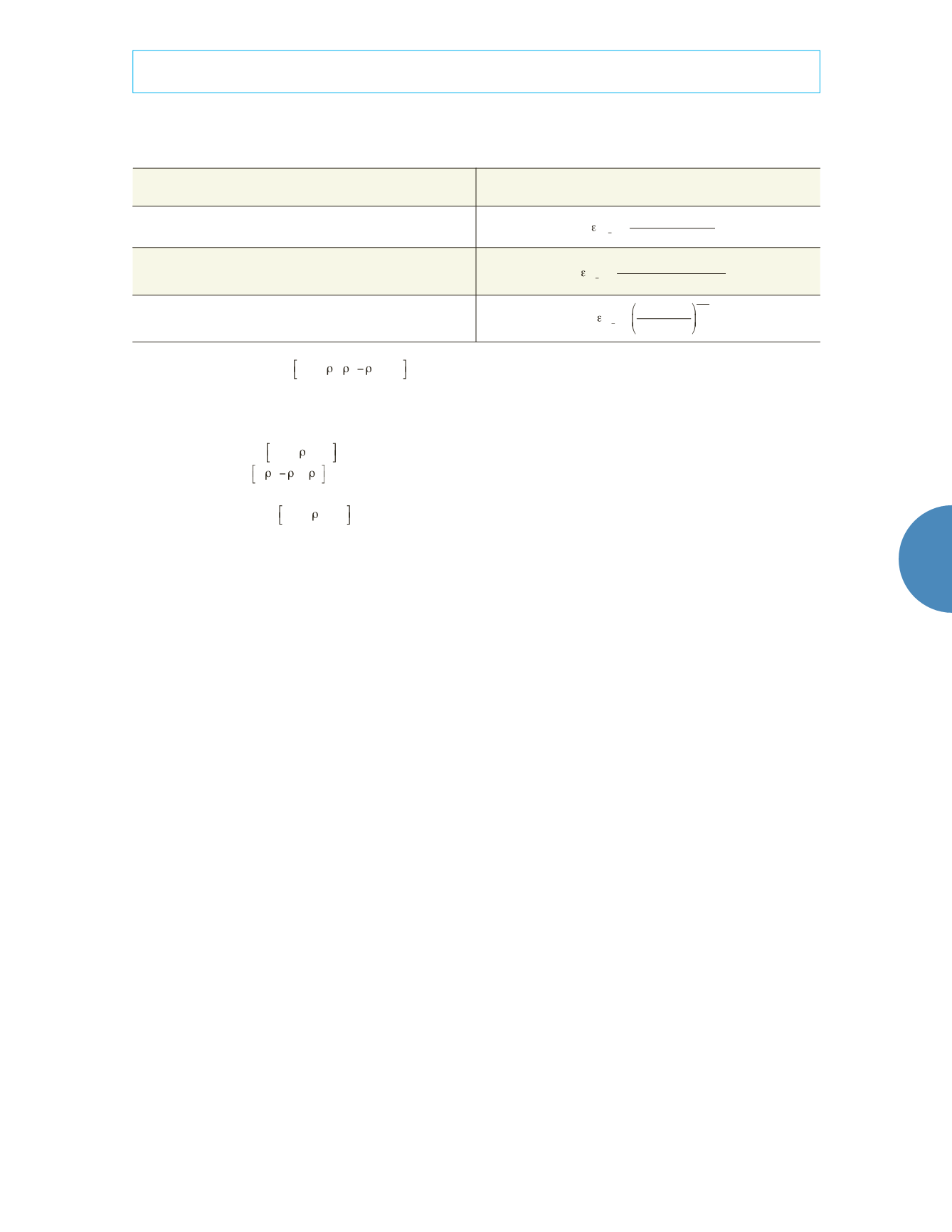
147
Tecnología y Ciencias del Agua
, vol. VIII, núm. 3, mayo-junio de 2017, pp. 143-150
Campos-Díaz & Alvarez-Cruz,
A proposal of a hydrodynamic model to low Reynolds numbers in a liquid-solid inverse fluidized bed reactor
ISSN 2007-2422
•
Table 1. Porosity function model by different authors.
Author
Porosity function
f
(ε)
Wen and Yu (1966)
f
( )
W Y
=
Ar
18
Re
+
2.7
Re
1.687
Riba and Couderc (1977)
f
( )
R C
=
GaMv
1.9(18
Re
+
2.7
Re
1.687
)
Ramamurthy and Subbaraju (1973)
f
( )
R S
=
Ar
13.9(
Re
1.4
)
1
2.21
Ar
Archimedes number
=
d
p
3
g
L
(
L S
)/
μ
L
2
d
p
Particle diameter
f
Function
f
(
e)
Porosity function
g
gravity
Ga
Galileo number
=
d
p
3
g
L
2
/
μ
L
2
Mv
Density ratio
=
L p
/
L
m
L
Liquid viscosity
Re
Reynolds number
=
d
p
v
L
/
μ
L
r
L
Liquid density
r
p
Particle density
The model proposed in this paper was
designed using the inertial drag coefficient (C
I
)
Becker (1959) for
Re
< 200. The data used in the
model proposed in this work were Wilhelm
and Kwauk (1948) and the experimental data
obtained in this work. The model to calculate
the porosity of spherical particles and the
application intervals as shown in table 2.
Ramamurty and Subaraju (1973) porosity
function fits the experimental data tendency, but
do not represent the experimental bed porosity.
The plot (figure 3) shows an experimental un-
derestimation for experimental data between 0.5
and 0.73 of bed porosity, this deviation can be
attributed to the principal assumption by these
authors that the solid particles are represented
as an ensemble moving about points considered
as nodes of an imaginary lattice through whose
free volume the fluid is flowing. It is important
to notice that this model was developed for an-
nular fluid.
Riba and Courdec (1977) model fits the
experimental data tendency but the plot shows
a slight experimental underestimation for ex-
perimental data between 0.55 and 0.63 of bed
porosity.
Wen and Yu (1966) model fits has a good
correlation of bed porosity data; the standard
deviation was 1.2%.
The mathematical model proposed in this
work fits well the trend of the experimental bed
porosity data for spherical particles which was
well represented by this function in the inter-
val of porosity from 0.47 to 0.73; the standard
deviation was 0.9%.
The new model has several advantages
because Wen and Yu (1966), Riba and Cour-
derc (1977), and Ramammurthy and Subaraju
(1973), restrict their model to traditional fluidi-
zation (upward flow) and spherical particles.
Furthermore the new model is considerably
simple in form, it can be used for spherical
particles, but includes a term of inertial drag
coefficient proposed by Becker (1959) which
includes a shape factor to non-spherical
particles.
The figure 3 shows the graph of the func-
tion of porosity that results from using the cor-
relation Wen and Yu, Riba and Couderc (1977),
Ramamurthy and Subbaraju (1973), and the
model proposed in this work.


